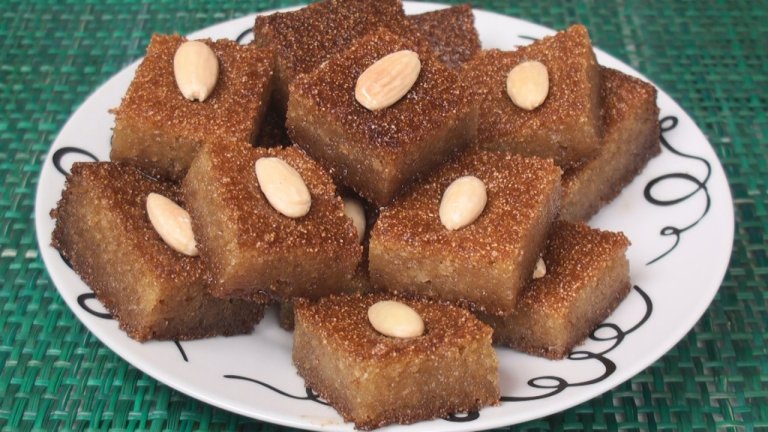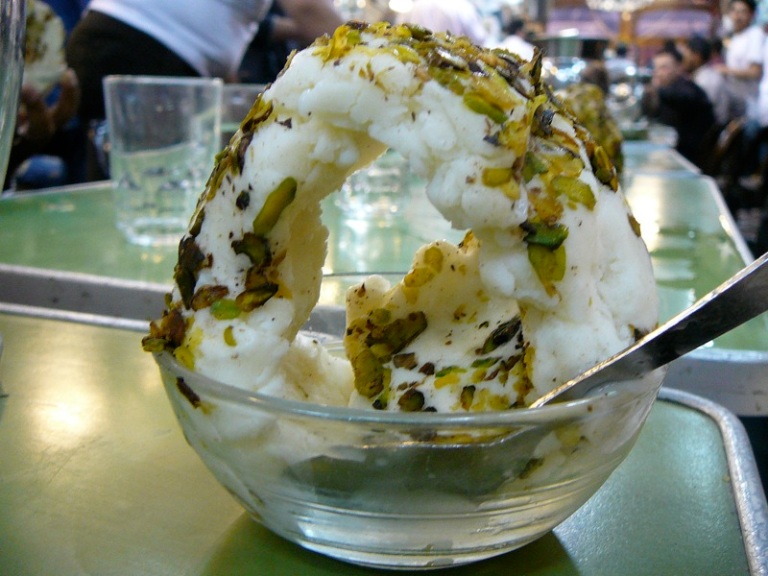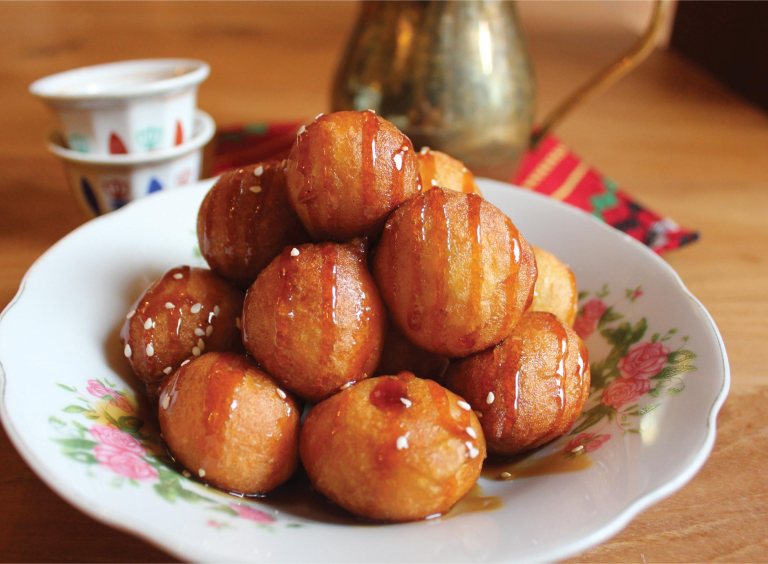Here are 11 fantastic Arabic desserts to destroy your diet!

Basbousa (recipe) is a traditional Middle Eastern cake. It is made of cooked semolina and soaked in a simple syrup. Coconut is a popular addition. The syrup may also contain rose water.

Booza is traditional Syrian ice cream, originating in Damascus. It has a much harder in texture than the usual western-style ice cream as to remain resistant to the intense heat of the region. A healthy topping of pistachio nuts is the norm in these parts.

Fakhfakhina is an Egyptian fruit cocktail that is perhaps the most photogenic of all the Arabic desserts. The ice cream that is added make a good contrast to the fresh fruit and cocktail juices found within!

Halva (recipe) is a crumbly dessert usually made from tahini or other nut butters, such as sunflower seed butter. It is eaten all over the Arab World, and even in Israel. The primary ingredients are nut butter and sugar. Halva may also be based on various other ingredients, including sunflower seeds, nut varieties, beans, lentils, and vegetables such as carrots, pumpkins, yams, and squashes.

Kunafeh (recipe) is a Levantine cheese pastry soaked in sweet sugar-based syrup, typical of the regions belonging to the former Ottoman Empire. It is a dessert specialty of the Levant, especially in Lebanon, Jordan, Palestine, Syria and northern Egypt.

Lab-e-Shireen (recipe) is a delectable mixture of cream and custard topped with fresh fruit. Such a simple recipe has become one of the most popular – and most colourful – desserts in the family home of Arabic people, especially in Saudi Arabia.

Lokum is the traditional name for Turkish Delight. Although originating in Turkey, these sweets are now eaten all over the region, as a snack, and as a more fulsome dessert, occasionally topped with milk or custard.

Luqaimat (recipe) are sweet dumplings that have been deep-fried and then covered in honey and syrup. Luqaimat are usually eaten in large quantities for dessert but can also be a very tempting snack. They look very similar to the Indian dessert Gulab Jamun.

Ma’amoul (recipe) are small shortbread pastries filled with dates, pistachios or walnuts (or occasionally almonds, figs, or other fillings). They are popular in Levantine cuisine and in the Gulf countries. They may be in the shape of balls or of domed or flattened cookies. They can either be decorated by hand or be made in special wooden moulds.

Mehalabiya (recipe) is a traditional Arabic rose water and pistachio pudding, that originated in Egypt, but is not eaten everywhere in the region (especially popular in Qatar). Lots of rose water is required to make the taste of this dessert, not to mention plenty of full cream milk, and it is a firm family favourite.

Umm Ali (recipe) is a famous Egyptian bread and rice pudding that is known as one of the sweetest of all Arabic desserts. Usually topped with nut shavings and/or raisins.
So which Middle-Eastern dessert looks best to you? Have you tried any of these?


i’ve never been a fan of middle eastern desserts. i find them extremely sweet. and this goes the same for indian desserts.
LikeLike
Yeah they are known for being sweet, but you should try the Ma’amoul, they can be savoury not sweet. Also you must tried some Turkish delight at some point of oyur life?! 😛 Indian desserts are ok, especially gulab jamun and lassi.
LikeLike
i have yet to try ma’amoul. that seems doable. but i have tried turkish delights and indian desserts. way too sweet. while lassi i find too rich.
LikeLike
These are sugar bombs 😀😀😀
LikeLike